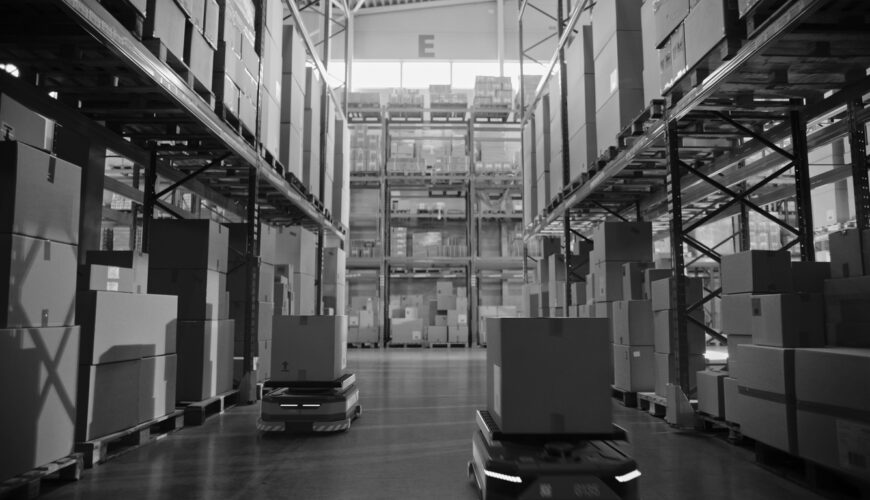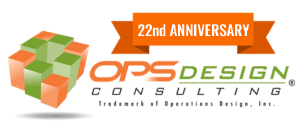Robotics-as-a-Service has evolved from an experimental pricing tactic into a defining structure in the warehouse technology market. As distribution centers face rising labor volatility, throughput expectations, and pressure to make smarter capital decisions, the way automation is financed has become as important as the automation itself. The question is no longer whether to automate, but how to pay for it.
This article examines the major commercial models, buying, subscribing, leasing, and paying per use, and what each one means for total cost of ownership, vendor dependency, contract risk, and long-term scalability.
The Capital Investment Model
Ownership, Asset Lifespan, and Predictability
Purchasing automation outright remains the most traditional route. Companies that view robotics as long-horizon strategic infrastructure often prefer to own the asset, depreciate it, and integrate it deeply into their engineered processes.
The benefit is control. Once purchased, the equipment is yours. You choose the maintenance strategy, spare-parts stocking levels, upgrade cadence, and integration roadmap. This model fits DCs with stable volumes, predictable SKU profiles, and an engineering team capable of managing complex assets.
The drawback is inflexibility. A system sized for today’s peak may be mismatched to tomorrow’s operating requirements. Capital-heavy systems also demand internal expertise; if your team lacks strong maintenance and data capabilities, performance can drift and ROI erodes quietly over time.
Leasing
A Middle Ground with Subtle Tradeoffs
Operational leases offer a way to use equipment without tying up balance-sheet capital. For CFOs, leasing preserves cash and avoids depreciation on the books. For operators, it provides predictable monthly payments similar to financing a fleet.
Where leasing differs from RaaS is responsibility. The equipment may not sit on your balance sheet, but you still carry much of the operational burden. Maintenance, uptime, software, and support typically remain your responsibility unless negotiated otherwise. For high-complexity automation, goods-to-person systems, autonomous forklifts, or robotic palletizing, this can become an unexpected internal cost center.
Leasing works best when the system’s functional life is well understood and when an organization prefers financial flexibility without sacrificing ownership-style control.
Robotics-as-a-Service (RaaS)
Subscription Pricing, Continuous Improvement, and Vendor Dependency
RaaS shifts automation to a service relationship. Instead of buying robots, you subscribe to outcomes, often measured in throughput tiers, hours of availability, or the number of active units deployed.
The appeal is speed. RaaS lowers the financial barrier to entry and allows pilots, phased rollouts, and quick scaling. It also aligns incentives: if robots fail, throughput suffers, and the vendor feels it as directly as you do.
RaaS also bundles software, support, upgrades, and fleet optimization. For fast-growing e-commerce DCs, this frees the operations team from asset management and keeps technology continuously current.
The tradeoff is dependence. Under RaaS, the vendor controls pricing, roadmap, update cadence, and the algorithms that drive efficiency gains. Switching costs can be extremely high. Over a five- to seven-year horizon, the subscription premium can surpass the cost of owning equivalent equipment, particularly if volume is stable or predictable.
Pay-Per-Use Models
True Variability for Variable Operations
Pay-per-use is the newest and least standardized model. It charges only for the work performed, per pick, per pallet moved, per hour of robotic uptime.
For operations with seasonal spikes or unpredictable labor availability, this model mirrors how 3PLs buy capacity: only when needed. It enables DCs to run a small baseline fleet and “burst” into additional robotic labor during peak.
However, pay-per-use requires transparency. If performance metrics are not clear, the cost structure can become unpredictable. Vendors typically price the variable component at a premium to compensate for the flexibility they provide. Over time, this can exceed both subscription and capex routes if usage becomes consistently high.
Total Cost of Ownership
What Actually Drives Cost Over Five to Ten Years
TCO is often misunderstood as a simple comparison of monthly payments versus amortized capex. In practice, four factors dominate long-term cost:
System utilization: Under capex, low utilization is a sunk cost. Under RaaS or pay-per-use, you may pay more per unit of work during high-usage periods.
Maintenance and uptime: Ownership requires internal technical capability. Service contracts can be purchased, but they rarely cover software upgrades or optimization. RaaS usually bundles these, stabilizing uptime but increasing dependency.
Software value: Modern robotics is more software than hardware. The efficiency of routing, prioritization, and orchestration heavily influences performance. Owning assets does not guarantee access to ongoing software innovation.
Scaling pattern: Rapidly changing networks (new DCs, shifting SKUs, uncertainty in sales forecasts) tend to benefit from subscription models. Stable networks with predictable volume often realize lower TCO through ownership.
Vendor Ecosystem Dynamics
Why the Commercial Model Shapes Your Technical Roadmap
Most robotics vendors favor subscription or pay-per-use models because they create recurring revenue and allow vendors to optimize fleets across customers. Meanwhile, traditional automation integrators still gravitate toward capex models, especially for heavy equipment like conveyors or palletizing cells.
The right vendor model depends on the operational layer you’re automating. Mobile robots are inherently flexible and suit subscription pricing. High-throughput systems, shuttle ASRS, and large-scale conveyors tend to be multi-million-dollar engineered assets that buyers prefer to own or lease.
As hybrid architectures become more common, robots feeding goods-to-person stations, software orchestrating multiple automation layers, the line between capex and subscription continues to blur.
Contract Pitfalls
Where Companies Commonly Regret Their Decision
The most frequent issues appear in three areas:
Performance definitions: RaaS and pay-per-use contracts often tie pricing to throughput, but the definitions of “per pick,” “per task,” or “uptime” vary widely. Poorly defined metrics create billing disputes and missed ROI.
Exit terms: Subscription contracts may carry auto-renewals, minimum commitments, or high removal fees. Technology replacement cycles move quickly; a five-year lock-in can be a full generation of robotics.
Data ownership: Robotics produces operationally critical data. Contracts must clarify who owns it, who can use it for model training, and how it is exported if the relationship ends.
How to Match the Model to Your Scale
A Practical Way to Frame the Decision
Small and midsized DCs often prioritize cash flexibility and variable demand coverage, making RaaS or pay-per-use compelling starting points. This is especially true when the organization lacks internal robotics expertise or expects major shifts in product mix.
Large networks with engineering depth, stable order profiles, and the ability to run preventive maintenance tend to favor ownership or structured leases. Their scale allows them to negotiate better service contracts, and they benefit from depreciating assets over longer timelines.
A useful rule of thumb is this: if your five-year throughput forecast has more than a 20–30 percent margin of uncertainty, subscription models usually outperform capex. If your forecast is stable and your engineering team is mature, ownership almost always wins on TCO.
Final Thoughts
Automation is no longer simply about replacing labor; it is about designing a resilient, flexible, and continuously improving fulfillment network. The commercial model you choose shapes how quickly you can adapt, how tightly you rely on vendors, and what the true long-term cost of throughput becomes. Decision-makers should treat pricing structure as part of the automation architecture itself, not an afterthought.
If approached thoughtfully, the right model can turn robotics from a high-stakes investment into a low-friction strategic capability that grows with the business rather than constraining it.


